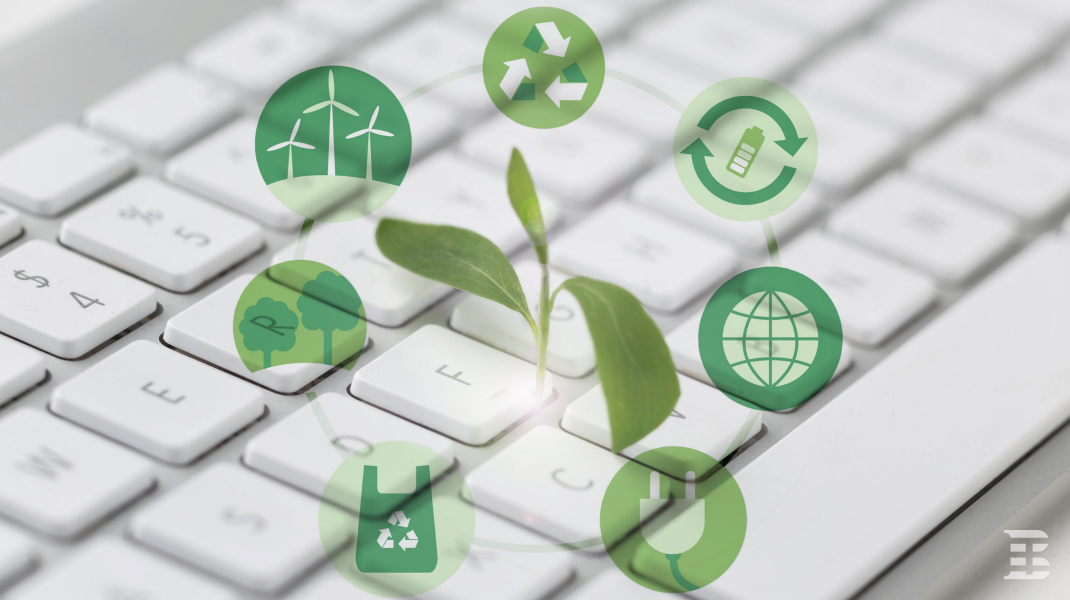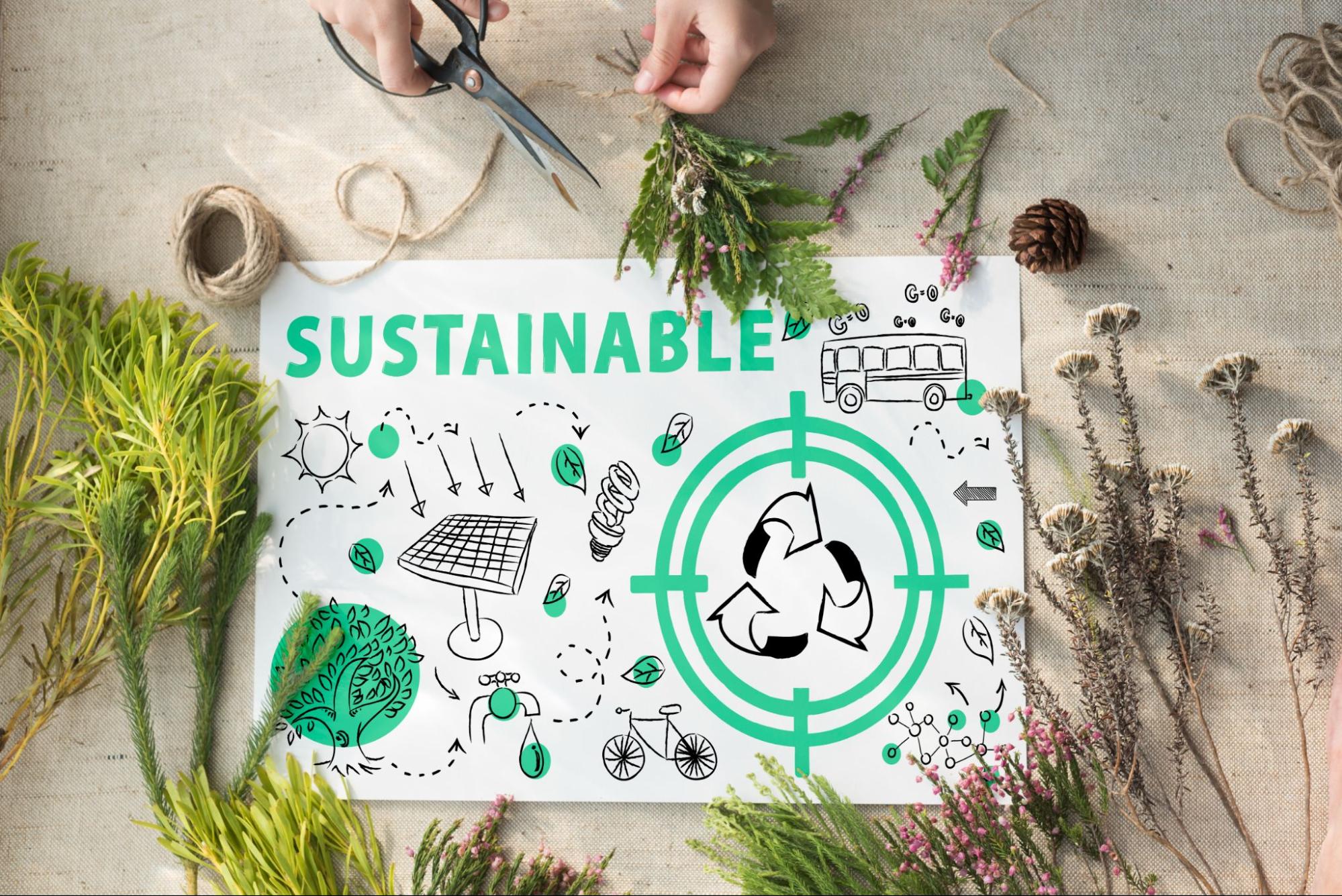Top 7 IT Companies Creating a More Sustainable Future

In an era defined by technological advancement, the intersection of Information Technology (IT) and sustainability is a critical focal point. This fusion steers us toward a more ecologically balanced and environmentally conscious future.
Sustainability in IT encompasses a multifaceted approach to leveraging technology to improve our planet.
It involves the responsible management of resources, reducing carbon footprints, and integrating eco-friendly practices within the realm of information and communication technologies.
Below, we’ll reveal what IT firms are leading in sustainability. These 7 global IT giants stand at the forefront of technological innovation and lead the way in the realm of sustainability, with their actions and initiatives contributing to a better future for all of us.
1. Microsoft
At the heart of Microsoft's sustainability efforts lies a groundbreaking data center design and operation approach.
Recognizing the immense energy demands of data processing, Microsoft has pioneered innovations in data center efficiency for Azure cloud services. Their data centers are engineered to maximize energy utilization and minimize waste.
With cutting-edge cooling technologies, such as liquid immersion cooling and advanced airflow management systems, the company has achieved remarkable gains in energy efficiency.
Remarkably, these innovations not only lead to substantial reductions in power consumption but also significantly decrease the associated carbon emissions.
Thus, their hyperscale data centers for cloud service proved to be 93% more energy-efficient and 98% carbon-efficient than on-premise solutions.
Moreover, the company can optimize its operations by strategically situating data centers in regions with access to renewable energy sources.
In 2030, the company will take significant strides toward achieving a carbon-neutral operational footprint by procuring energy from wind, solar, and hydroelectric sources.
Microsoft's carbon-neutral pledge encompasses not only its direct operational emissions but also includes emissions associated with the entire lifecycle of its products and services. And their renewable energy infrastructure also contributes to expanding renewable energy capacity in their operating regions.
2. Google
One of Google's cornerstone initiatives is its substantial investment in renewable energy sources. In 2017, the company committed to matching 100% of its global electricity consumption with renewable energy.
This ambitious endeavor entailed the procurement of renewable energy certificates and power purchase agreements– which enabled Google to support and fund renewable energy projects directly.
They’ve diversified their investment with various technologies, such as geothermal and biomass, to ensure a more resilient and sustainable energy supply chain.
Google has also embraced the principles of a circular economy that emphasizes the reduction of waste through the design, reuse, and recycling of products and materials.
Their hardware products, such as Pixel phones and Nest devices, are engineered with a focus on longevity, repairability, and recyclability.
The company also champions initiatives like the "Google Device Trade-In Program," which encourages users to return their old devices for responsible recycling or refurbishment
Through rigorous waste reduction strategies, Google aims to divert 100% of its operational waste away from landfills.
This involves comprehensive waste management programs prioritizing recycling, composting, and responsible disposal practices. That’s not to mention zero-emission operations they strive to achieve by 2030.
These sustainability principles can extend beyond waste reduction and inspire businesses looking to adopt eco-friendly approaches, such as converting PSD to HTML in web development.
3. Apple
The rigorous approach to product lifecycle management is central to Apple's sustainability ethos. The company employs a holistic strategy encompassing design, production, distribution, and end-of-life considerations.
Apple's design philosophy emphasizes durability, repairability, and upgradeability and aims to extend the lifespan of its products.
This giant tech company invests in research and development to create energy-efficient devices, reducing both operational and user-based environmental impact.
It also provides support through initiatives like the Apple Trade-In program. Customers can now dispose of their old devices and receive credit towards the purchase of new ones.
Apple is committed to revolutionizing material sourcing and recycling in the tech industry. This company also successfully maintained a reading culture by publishing Apple Books, where people can now read books easily. The company prioritizes renewable and recycled resources whenever possible.
Through initiatives like Daisy, a specialized robot designed for disassembling and recycling iPhones, Apple has demonstrated a commitment to responsible e-waste management.
Another standout accomplishment for Apple is its achievement of carbon neutrality across its corporate operations. Besides, they have extended their carbon neutrality commitment to the entire supply chain, working with suppliers to implement sustainable practices by 2030.
So, if you're building a promising media and entertainment software development company, take a cue from a giant like Apple.
4. IBM
By deploying a multifaceted approach that combines technological innovation with strategic partnerships, IBM is actively contributing to environmental conservation and sustainability.
IBM’s foray into Artificial Intelligence played a pivotal role in environmental conservation. The company’s AI-powered solutions are utilized in projects ranging from monitoring deforestation and wildlife conservation to optimizing energy consumption in buildings and cities.
Additionally, IBM's smart technologies are employed in precision agriculture. This makes it much easier for farmers to optimize resource use, reduce waste, and enhance crop yields.
This application of AI not only contributes to more sustainable agricultural practices but also supports global food security efforts.
Recognizing the significance of supply chains in sustainable practices, IBM has undertaken initiatives to green its own supply chain and assist its partners in doing the same.
The company emphasizes responsible sourcing to reduce the environmental impact of raw material extraction and production. By fostering a network of environmentally-conscious partners, they work to create a more sustainable ecosystem for the entire industry.
In its Environmental Report, the company outlined 21 sustainability goals. This includes the commitment to achieve zero greenhouse gas emissions by 2030, along with the issues of carbon emissions reduction, energy conservation, water management, biodiversity, and product recycling.

5. Dell
One of Dell's flagship sustainability initiatives is comprehensive closed-loop recycling programs designed to ensure that end-of-life electronic products are collected, processed, and reintegrated into the production cycle.
Through advanced recycling technologies, Dell maximizes the recovery of valuable materials, such as metals and plastics, from retired devices.
Notably, these programs extend beyond Dell’s own products. The company actively engages with customers and other stakeholders to promote responsible end-of-life practices.
Other than that, the company invests in research and development to create products that prioritize energy efficiency without compromising performance.
Their energy-efficient hardware designs encompass a range of innovations, from power-wise processors and components to intelligent power management systems.
Dell is also dedicated to minimizing the environmental impact of its packaging materials and practices. They use recycled and renewable materials and packaging designs optimized for efficient transportation and storage. In 2023, 94.5% of their packaging was made of recycled materials.
6. Cisco
Central to Cisco's sustainability efforts is its commitment to energy efficiency in networking solutions. The company heavily invests in research and development to create products and technologies that optimize energy consumption.
Their networking hardware and software solutions incorporate features like power management, intelligent energy usage monitoring, and adaptive performance adjustments.
Cisco has set ambitious goals for reducing its own greenhouse gas emissions. The company focuses on comprehensive strategies encompassing its operations, products, and supply chain to hit the zero emissions target by 2040.
Through initiatives like energy-efficient building designs, renewable energy procurement, and transportation optimization, the company is actively working to minimize its environmental footprint.
By 2025, Cisco plans to incorporate circular design principles for 100% of its products and packaging. Besides, the company rigorously invests in climate solutions and has committed to spending over $100 million on climate-related public initiatives within 10 years.
7. Intel
As a leader in semiconductor technology, Intel invests heavily in research and development to create processors that deliver high performance while minimizing power consumption.
By 2030, the company plans to achieve net positive water, zero waste to landfill, and 100% renewable electricity across its global operations.
Alongside, the company actively collaborates with software developers and industry partners to optimize applications and workloads for energy-efficient computing.
Recognizing the environmental impact of semiconductor manufacturing, Intel has made substantial strides in reducing water usage, energy consumption, and waste generation in its semiconductor fabrication facilities.
The company employs advanced water recycling and treatment systems to minimize water usage and invests in energy-efficient equipment and processes. They have advanced lithography techniques and state-of-the-art cleanrooms to reduce energy consumption and greenhouse gas emissions.

To Recap
The collective efforts of these IT industry leaders demonstrate the potential for technology to be a force for positive environmental change.
By prioritizing sustainability in their operations and products, these companies have set a standard for the industry and showcased the significant impact that can be achieved.
All stakeholders, from companies to consumers, should continue pushing for progress in green IT and work towards a more sustainable and environmentally conscious future.